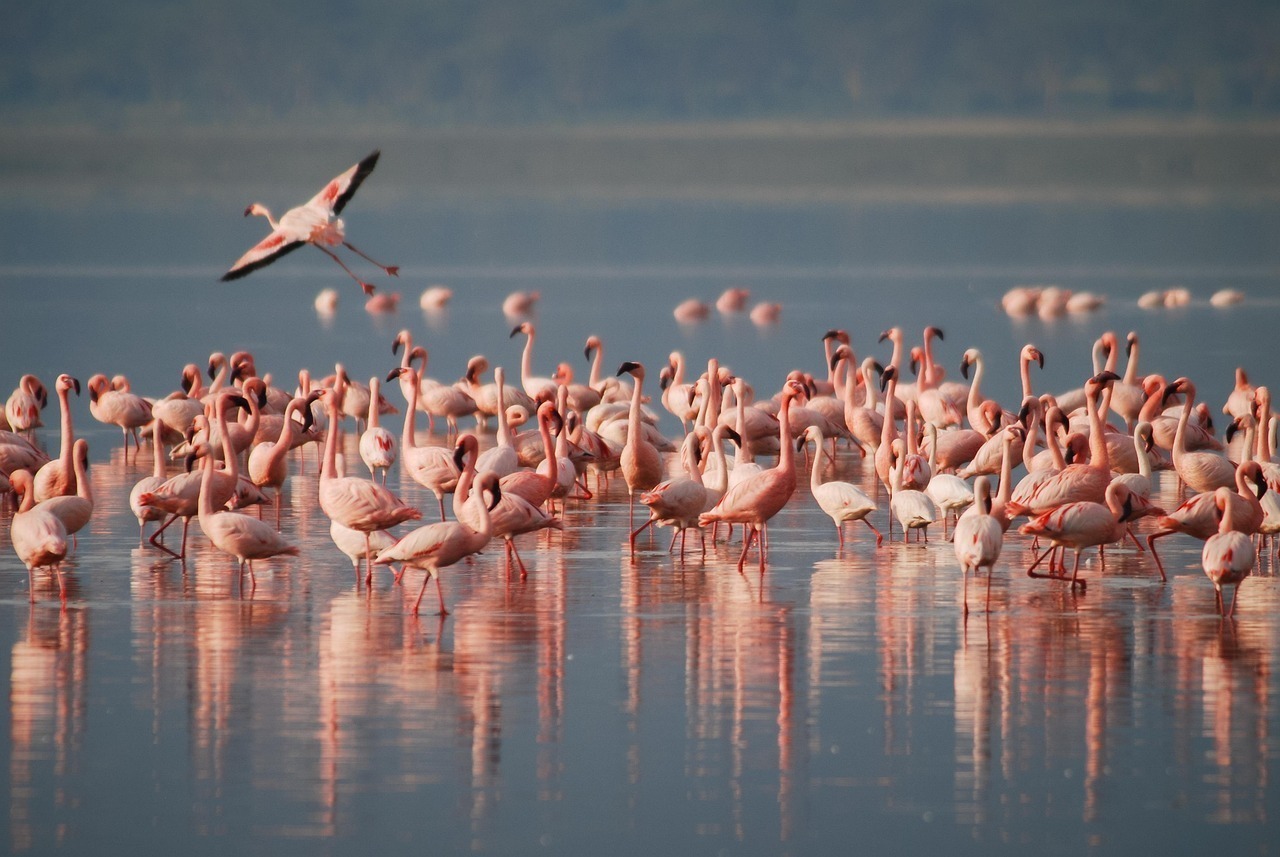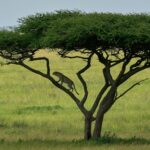Introduction to Planning a Tanzania Safari
Tanzania, a country renowned for its vast wilderness areas and diverse wildlife, offers an unforgettable safari experience for adventure seekers and nature enthusiasts alike. From the iconic plains of the Serengeti to the majestic heights of Mount Kilimanjaro, Tanzania boasts a rich tapestry of landscapes and ecosystems waiting to be explored. However, embarking on a safari adventure requires careful planning to ensure a smooth and enjoyable trip.
Overview of Tanzania
Tanzania, located in East Africa, is home to some of the continent’s most renowned national parks and game reserves, including the Serengeti, Ngorongoro Crater, and Tarangire. Its breathtaking scenery, abundance of wildlife, and vibrant cultural heritage make it a top destination for safari-goers from around the globe.
Importance of Planning
Planning is essential when embarking on a Tanzania safari, especially during peak season. From securing accommodations to arranging transportation and booking safari excursions, careful preparation can make all the difference in ensuring a memorable and hassle-free trip.
Factors to Consider Before Planning
Before diving into the details of your safari itinerary, it’s important to consider several factors that will influence your overall experience. These include your budget, travel dates, preferred destinations, and any specific wildlife sightings you hope to encounter.
Choosing the Best Time for a Safari
When planning a Tanzania safari, timing is key. Understanding the concept of peak season and its implications can help you make informed decisions about when to visit and which destinations to prioritize.
Understanding Peak Season
Peak season in Tanzania typically coincides with the dry season, which runs from June to October. During this time, wildlife congregates around water sources, making it easier to spot iconic species such as lions, elephants, and giraffes.
Weather and Climate Considerations
The dry season offers clear skies and pleasant temperatures, making it an ideal time for safari adventures. However, it’s essential to be prepared for chilly mornings and evenings, especially in high-altitude areas like the Ngorongoro Crater.
Wildlife Migration Patterns
One of the highlights of visiting Tanzania during peak season is witnessing the Great Migration, a natural spectacle where millions of wildebeest, zebras, and other herbivores traverse the Serengeti in search of fresh grazing grounds. Planning your safari around this phenomenon can provide unparalleled wildlife viewing opportunities.
Selecting Safari Destinations
Tanzania is blessed with a plethora of safari destinations, each offering its own unique attractions and experiences. When planning your trip, consider the following top destinations:
Top Safari Destinations in Tanzania
- Serengeti National Park: Known for its vast plains and annual wildebeest migration, the Serengeti promises unparalleled wildlife sightings year-round.
- Ngorongoro Crater: A UNESCO World Heritage Site, the Ngorongoro Crater is home to a dense concentration of wildlife, including the elusive black rhinoceros.
- Tarangire National Park: Famous for its large elephant herds and ancient baobab trees, Tarangire offers a more off-the-beaten-path safari experience.
Unique Features of Each Destination
- Serengeti: Witness the drama of predator-prey interactions during the Great Migration.
- Ngorongoro Crater: Descend into the world’s largest intact volcanic caldera for unparalleled wildlife viewing opportunities.
- Tarangire: Explore diverse landscapes, from grassy savannahs to dense woodlands, teeming with wildlife.
Accessibility and Accommodation Options
Each safari destination offers a range of accommodation options to suit every budget and preference, from luxury lodges to tented camps and budget-friendly campsites. Additionally, domestic flights and road transfers make it easy to access remote wilderness areas.
Preparing for Your Safari Adventure
Packing Essentials
Packing for a Tanzania safari requires careful consideration of essential items such as lightweight clothing, sturdy hiking boots, a wide-brimmed hat, and high-quality binoculars. Additionally, don’t forget to pack sunscreen, insect repellent, and a refillable water bottle to stay hydrated.
Health and Safety Precautions
Before embarking on your safari adventure, ensure you are up-to-date on routine vaccinations and consider additional immunizations such as yellow fever and malaria prophylaxis. Pack a comprehensive first-aid kit and familiarize yourself with emergency procedures in case of unexpected situations.
Booking Accommodation and Transportation
When planning your safari, book accommodation and transportation well in advance, especially during peak season when availability may be limited. Consider partnering with reputable tour operators or travel agents who can assist with logistics and ensure a seamless travel experience.
Activities and Attractions during Peak Season
Game Drives and Wildlife Viewing
Embark on exhilarating game drives in open-sided safari vehicles, accompanied by experienced guides who will help you spot elusive wildlife and share fascinating insights into Tanzania’s ecosystems. Keep your camera ready for unforgettable encounters with lions, elephants, and other iconic species.
Cultural Experiences
Immerse yourself in Tanzania’s rich cultural heritage by visiting local communities and participating in cultural activities such as traditional dance performances, Maasai village visits, and craft markets. Engaging with local residents offers a unique perspective on daily life in Tanzania.
Hot Air Balloon Safaris
Experience the Serengeti from a new perspective with a hot air balloon safari, where you can soar above the treetops and enjoy panoramic views of the savannah below. Watch as the sun rises over the horizon, casting a golden glow on the African landscape below.
Budgeting Tips for a Tanzania Safari
Cost Breakdown and Average Expenses
When budgeting for your Tanzania safari, consider expenses such as accommodation, transportation, park entry fees, meals, and optional activities. Prices can vary depending on the level of luxury and exclusivity you prefer, so it’s essential to research costs in advance.
Ways to Save Money
To make your safari more affordable, consider traveling during the shoulder season or opting for mid-range accommodation options. Additionally, booking group tours or joining scheduled departures can help reduce costs while still offering a memorable safari experience.
Hidden Costs to Consider
In addition to upfront expenses, be mindful of hidden costs such as gratuities for guides and staff, park fees for additional activities, and optional extras such as spa treatments or alcoholic beverages. Planning for these expenses in advance can help you avoid unexpected surprises.
Ethical Considerations in Wildlife Tourism
Responsible Safari Practices
As responsible travelers, it’s crucial to minimize our impact on the environment and wildlife. Follow guidelines provided by your safari operator or guide, such as maintaining a safe distance from animals, refraining from feeding wildlife, and disposing of waste responsibly.
Supporting Conservation Efforts
Consider supporting conservation initiatives and responsible tourism practices by choosing eco-friendly accommodation options, purchasing locally made souvenirs, and donating to reputable conservation organizations working to protect Tanzania’s natural heritage.
Interacting with Wildlife Responsibly
When encountering wildlife on safari, prioritize the well-being of the animals by observing them from a respectful distance and avoiding any behavior that may disturb or endanger them. Remember that we are guests in their habitat and should treat them with the utmost care and respect.
Photography Tips for Safari Enthusiasts
Equipment Recommendations
Capture stunning wildlife photographs with the right equipment, including a digital SLR camera with telephoto lens, spare batteries and memory cards, lens cleaning kit, and a sturdy camera bag for protection against dust and moisture.
Composition and Lighting
Master the art of wildlife photography by experimenting with different compositions and utilizing natural light to enhance your images. Consider factors such as the rule of thirds, leading lines, and golden hour lighting to create visually compelling photographs.
Etiquette and Respect for Wildlife
When photographing wildlife, prioritize ethical considerations by respecting animals’ natural behavior and habitats. Avoid using flash photography or making loud noises that may startle or distress animals, and always adhere to park regulations regarding photography guidelines.
Planning Your Itinerary
Structuring Your Daily Schedule
Design a flexible itinerary that allows for a balance of safari activities, leisure time, and cultural experiences. Consider factors such as travel time between destinations, meal breaks, and opportunities for rest and relaxation to ensure a well-rounded safari experience.
Flexibility and Spontaneity
While it’s essential to have a rough itinerary in place, leave room for spontaneity and unexpected discoveries along the way. Some of the most memorable safari moments occur when least expected, so embrace the adventure and be open to new experiences.
Incorporating Rest and Relaxation
Amidst the excitement of wildlife encounters and cultural adventures, don’t forget to schedule downtime to rest and recharge. Whether it’s enjoying a sundowner overlooking the savannah or indulging in a rejuvenating spa treatment, prioritizing self-care enhances the overall safari experience.
Safety Measures during Peak Season
Wildlife Encounters
While Tanzania’s wildlife is undoubtedly awe-inspiring, it’s essential to approach encounters with caution and respect. Listen to your guide’s instructions, remain inside the vehicle at all times, and refrain from making sudden movements or loud noises that may provoke animals.
Emergency Protocols and Communication
Before embarking on safari, familiarize yourself with emergency protocols and communication procedures in case of unexpected situations. Ensure you have access to a charged mobile phone, emergency contacts, and relevant medical information in case of emergencies.
Local Customs and Cultural Sensitivities
Respect local customs and cultural sensitivities during your time in Tanzania, including appropriate dress codes, greetings, and social etiquette. Engage with local communities respectfully and seek permission before taking photographs or participating in cultural activities.
Navigating Tanzania’s National Parks and Reserves
Park Regulations and Entry Fees
Before entering Tanzania’s national parks and reserves, familiarize yourself with park regulations, including entry fees, opening hours, and designated safari routes. Observe speed limits and wildlife viewing guidelines to ensure a safe and enjoyable experience for all.
Guided vs. Self-Drive Safaris
Choose between guided or self-drive safaris based on your level of experience, comfort, and preference. Guided safaris offer the expertise of knowledgeable guides who can enhance your wildlife viewing experience, while self-drive options provide flexibility and independence.
Best Practices for Park Exploration
Maximize your safari experience by adhering to best practices for park exploration, including staying on designated roads and trails, refraining from littering, and respecting wildlife’s natural habitats. Remember that conservation is everyone’s responsibility, and small actions can make a big difference.
Environmental Impact and Sustainability
Minimizing Carbon Footprint
Reduce your environmental impact while traveling in Tanzania by opting for eco-friendly transportation options, such as hybrid or electric vehicles, where possible. Additionally, offset your carbon footprint by participating in reforestation or conservation initiatives.
Eco-Friendly Accommodation Options
Support eco-friendly accommodation establishments that prioritize sustainability and conservation practices, such as energy-efficient lighting, water conservation measures, and waste management initiatives. By choosing eco-conscious lodging, you can minimize your environmental footprint while supporting responsible tourism.
Supporting Local Communities and Conservation Initiatives
Contribute to Tanzania’s sustainable tourism industry by supporting local communities and conservation initiatives through responsible travel practices. Patronize locally owned businesses, purchase handmade crafts directly from artisans, and participate in community-based tourism initiatives that benefit local residents.
Conclusion: Making the Most of Your Tanzania Safari
As you reflect on your Tanzania safari experience, cherish the memories of breathtaking wildlife encounters, awe-inspiring landscapes, and vibrant cultural exchanges. Use your newfound knowledge and insights to inspire future safari adventures and encourage others to explore the wonders of Tanzania’s wilderness.
Tips for Future Safari Planning
- Start planning early to secure preferred accommodations and safari activities.
- Consider traveling during the shoulder season for fewer crowds and lower prices.
- Embrace the spirit of adventure and remain open to unexpected discoveries along the way.
FAQs (Frequently Asked Questions)
Q: What is the best time to plan a Tanzania safari during peak season?
A: Peak season in Tanzania typically coincides with the dry season from June to October, offering optimal wildlife viewing opportunities.
Q: What wildlife can I expect to see during peak season safaris in Tanzania?
A: During peak season, you can witness iconic species such as lions, elephants, giraffes, and wildebeest, along with the spectacular Great Migration in the Serengeti.
Q: How should I prepare for a Tanzania safari during peak season?
A: Prepare for your safari adventure by packing essential items such as lightweight clothing, sturdy footwear, sunscreen, and insect repellent, and booking accommodations and transportation in advance.
Q: What activities are available during peak season safaris in Tanzania?
A: Enjoy exhilarating game drives, cultural experiences, hot air balloon safaris, and photography opportunities amidst Tanzania’s stunning landscapes and diverse wildlife.
Q: How can I minimize my environmental impact while on safari in Tanzania?
A: Minimize your environmental footprint by choosing eco-friendly transportation, supporting sustainable accommodations, and participating in conservation initiatives that benefit local communities and wildlife.
Q: What safety measures should I observe during peak season safaris in Tanzania?
A: Prioritize safety during wildlife encounters, familiarize yourself with emergency protocols, and respect local customs and cultural sensitivities to ensure a safe and enjoyable safari experience.








